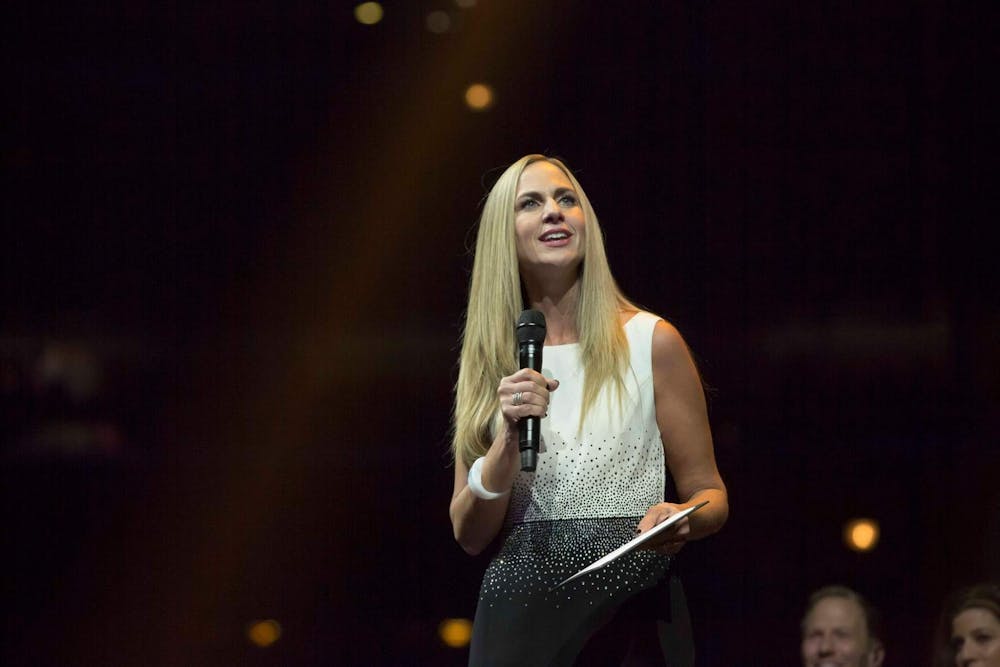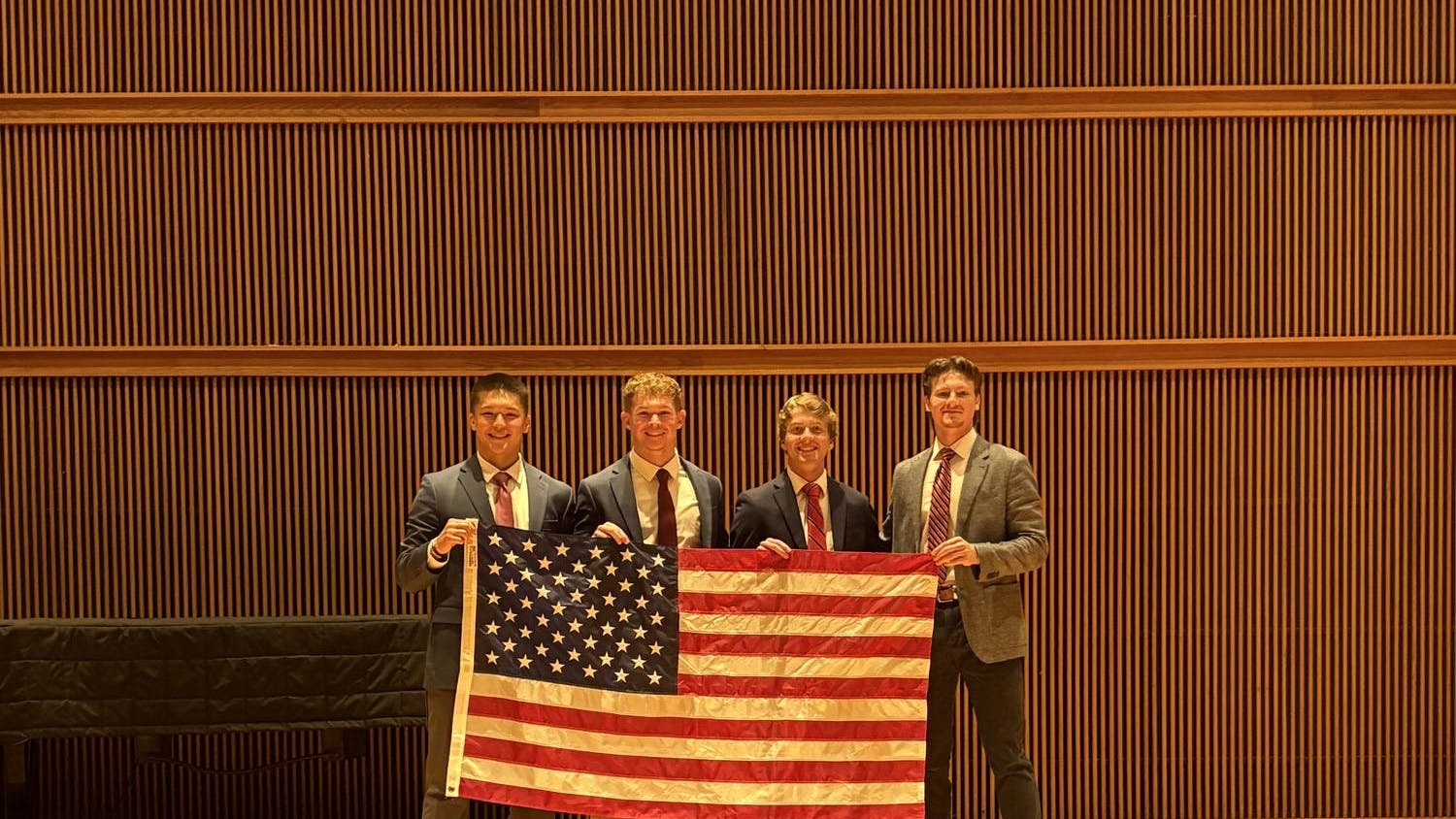It’s 10 a.m. on a Friday.
You walk over to chapel. Sit in the same seat as always. Talk to the same friends as always. Sing three songs as always.
Then the speaker comes up on stage. Sammy cheers uproariously. As always.
Before the speaker dives into their message for the morning, they give a shoutout to their old wing.
Now I’m not saying there is anything wrong with this progression of chapel mornings. I delight immensely in the routine of chapel that is timed almost down to the minute. I’m awed by the chapel bands who play and sing with such power and walk away from many speakers’ messages encouraged and ready to conquer the rest of my day.
However, the lack of diversity — in both our routine and the speakers we hear from — often leaves me wondering what we’re actually missing during these times.
What sermons, words of encouragement, whispers of hope are we as students not even getting the chance to hear because we aren’t asking the right voices to share with us during those times?
I did a little digging to find out. Bear with me as we trudge through some numbers to find meaning.
In fall 2019, we had 42 total chapels. Of those chapels, 31 were regular speaker-led chapels. Of those 31, only six were led by female speakers. One was led by a male/female duo. The other 24 were led by men. Percentage-wise, that boils down to only 19% of chapels in fall of 2019 having a non-male-preached message. Had we not had a female president at the time, that number would be reduced to 12%.
The following fall, in 2020, we saw similar numbers. Only 18% of speakers were women. That number would become 11% if there would have been a male president.
In spring 2021 the numbers climbed a little bit. 27% of speakers were female. 21% if our president was male.
These shocking numbers don’t stop at just regular chapel services. No, they get worse.
In the past 20 semesters of Spiritual Renewal services that could be found online, only one (one!) was female-led. In fall 2014, Heather Larson was the key speaker for Spiritual Renewal. Still, that was over five years ago.
All of the students currently at Taylor have never heard anyone besides a male lead a Spiritual Renewal service.
I imagine if I were to break down how many of those chapel speakers weren’t white, the numbers would be even more revealing of our lack of diversity.
I don’t dispute the fact that God moves through every chapel speaker to allow them to speak powerful and resonant messages. However, I do think that we do a disservice to the 55% of our students who are female and 16% of our students who aren’t white and don’t get to see themselves represented in the faces of those delivering the impactful chapel messages.
For many female and minority students, the walls beyond Taylor will consist of a similar context to the one they’re already experiencing: a disparate amount of white men in prominent leadership positions.
So why aren’t we using the four years they are in this bubble to show a picture of what equal representation should look like? If we as students aren’t spending our 18–22 year old years (at a Christian institution) getting a glimpse at what a community of equal representation looks like, then how will we move beyond this place with an aim to replicate this in our future communities?
If we aren’t experiencing a little bit of discomfort as we learn and grow inside the walls of Taylor, are we doing a disservice to our whole-person development?
Andrea Summers, campus pastor and dean of spiritual formation at Indiana Wesleyan University, offers two areas of opportunity for diversity that chapel provides. First, she says, diverse speakers who see the world through a different lens allow us to experience a more balanced approach to the Bible and Christian community.
Second, diversity in chapel speakers allows students’ imaginations to be expanded.
“There is a saying that ‘you cannot be what you cannot see,’” Summers said. “In fact, studies have shown that people are often limited by the examples of leadership they have been exposed to. What better time to offer the stunningly beautiful diversity of Kingdom leadership than when students are in college developing their own callings, passions and identities.”
So, Taylor University chapel leadership, I ask you that same question: what better time is there than now to offer a beautifully diverse array of chapel speakers for students to learn from and engage with?
Additionally, offer students and faculty a way to get involved in the chapel speaker selection process. Invite input from students who have experienced diverse leaders in their own communities and want to share those experiences with the rest of the student body.
Taylor students, I encourage you to embrace the discomfort that can come with breaking from our usual way of doing things. If Taylor chapel chooses to bend toward diversity, we as a student body will experience growing pains as our normal Monday, Wednesday, Friday chapels take on a different shape.
As you prepare for this growth, consider speakers who may bring a needed level of diversity to our chapel services. Jon Cavanagh, campus pastor, said that chapel speakers are selected anywhere from a few weeks to a year out, so there may yet be time to see speakers from your communities on stage in the spring semester.
Three times a week, hundreds of students choose to come to worship, learn and engage in community together through chapel as the body of Christ. While they’re there, we might as well show a better glimpse of what the global body of Christ looks like: men and women of all ethnicities learning and worshipping together.
For further dialogue on this topic please contact me at ellie_tiemens@taylor.edu or write into The Echo at echo@taylor.edu.




